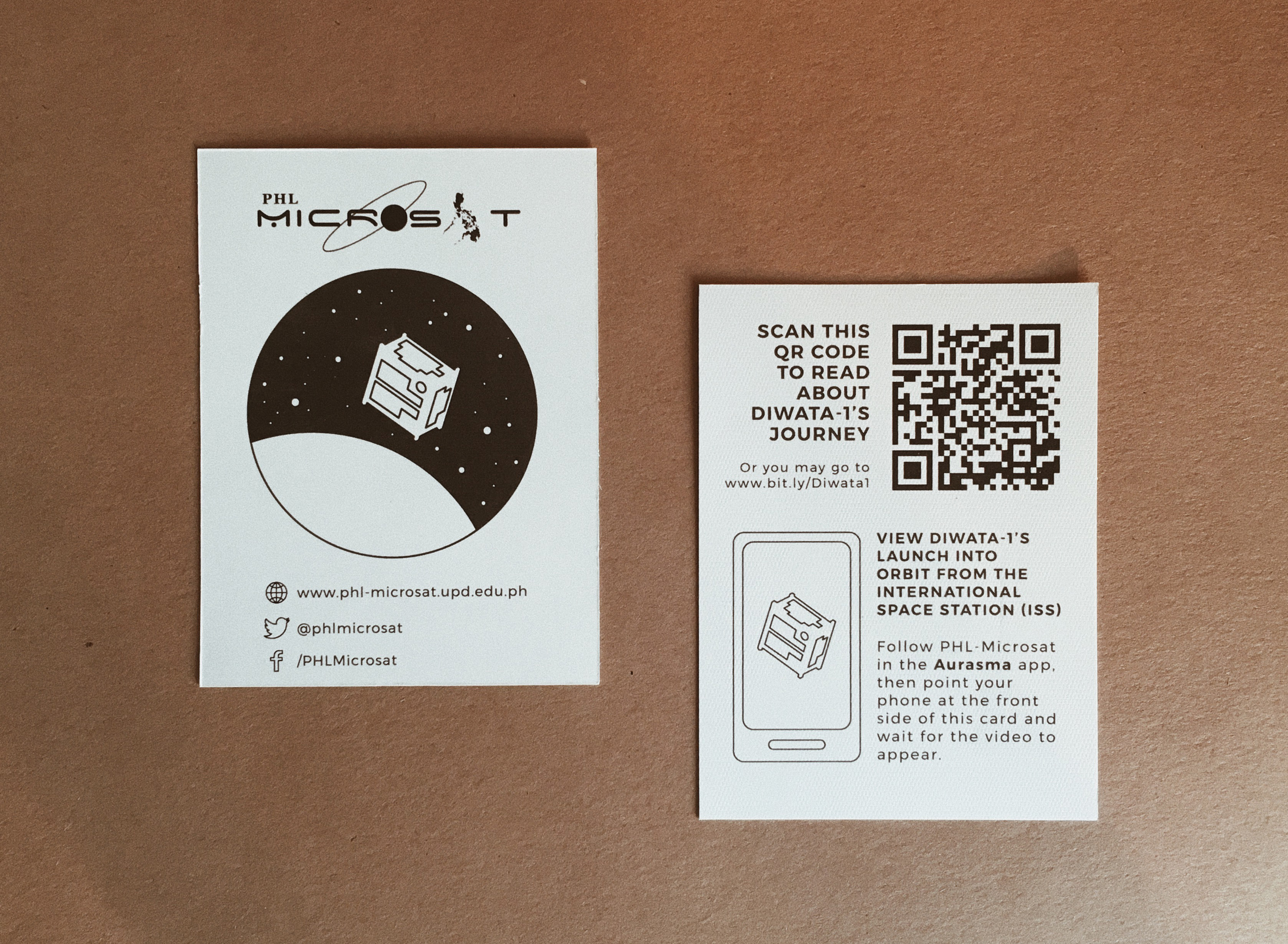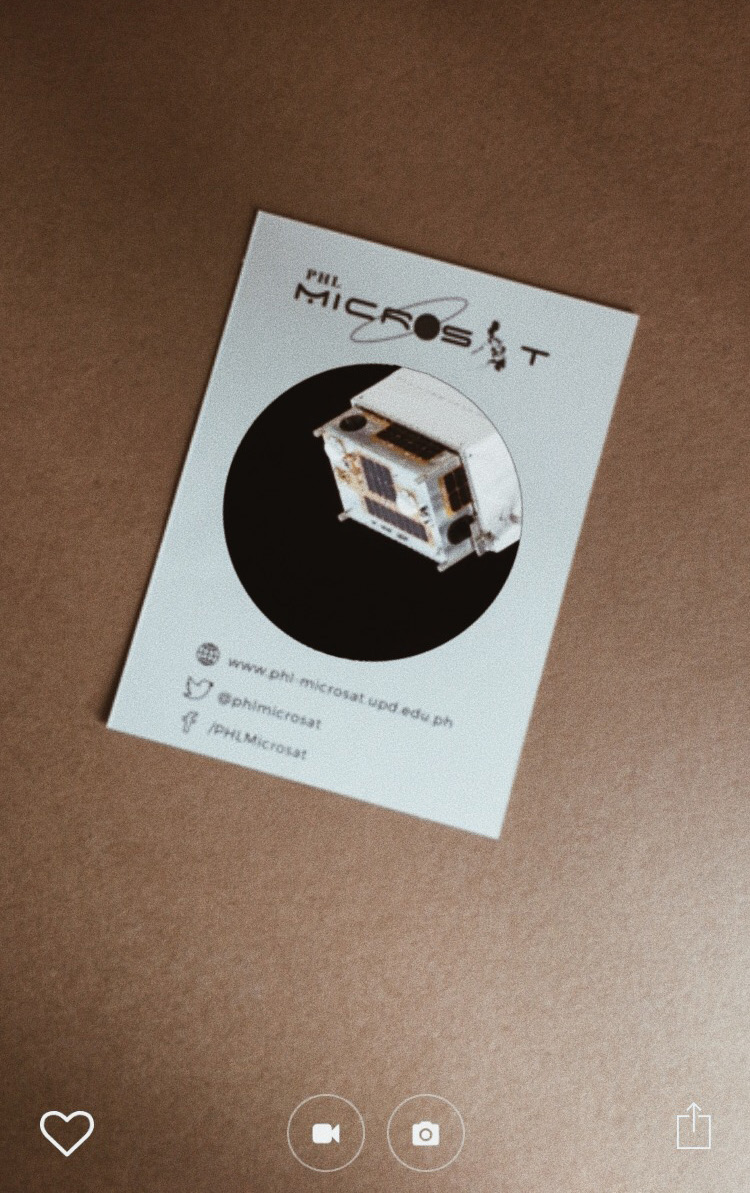
I used to work as a Project Development Officer for PHL-Microsat, which was a research program funded by the Department of Science and Technology (DOST). My job was to do technical and proposal writing, as well as handling the program's public relations, among other things.
Every year, DOST holds National Science and Technology Week (NSTW) and PHL-Microsat was one of the exhibitors that year. Since I was the PR person for the program, I was tasked with creating a brochure to introduce PHL-Microsat to the public. But instead of a brochure, I designed an interactive card instead.
Design considerations:
- A card with QR code and AR elements is a cost-effective alternative to brochures at an event with free wi-fi access.
- I made a layout that only uses black ink to ensure the card's aesthetic is not affected by photocopying.
- The QR code on the card redirects to an Adobe Spark page that outlines the journey of Diwata-1 in space and provides basic information about the microsatellite.
